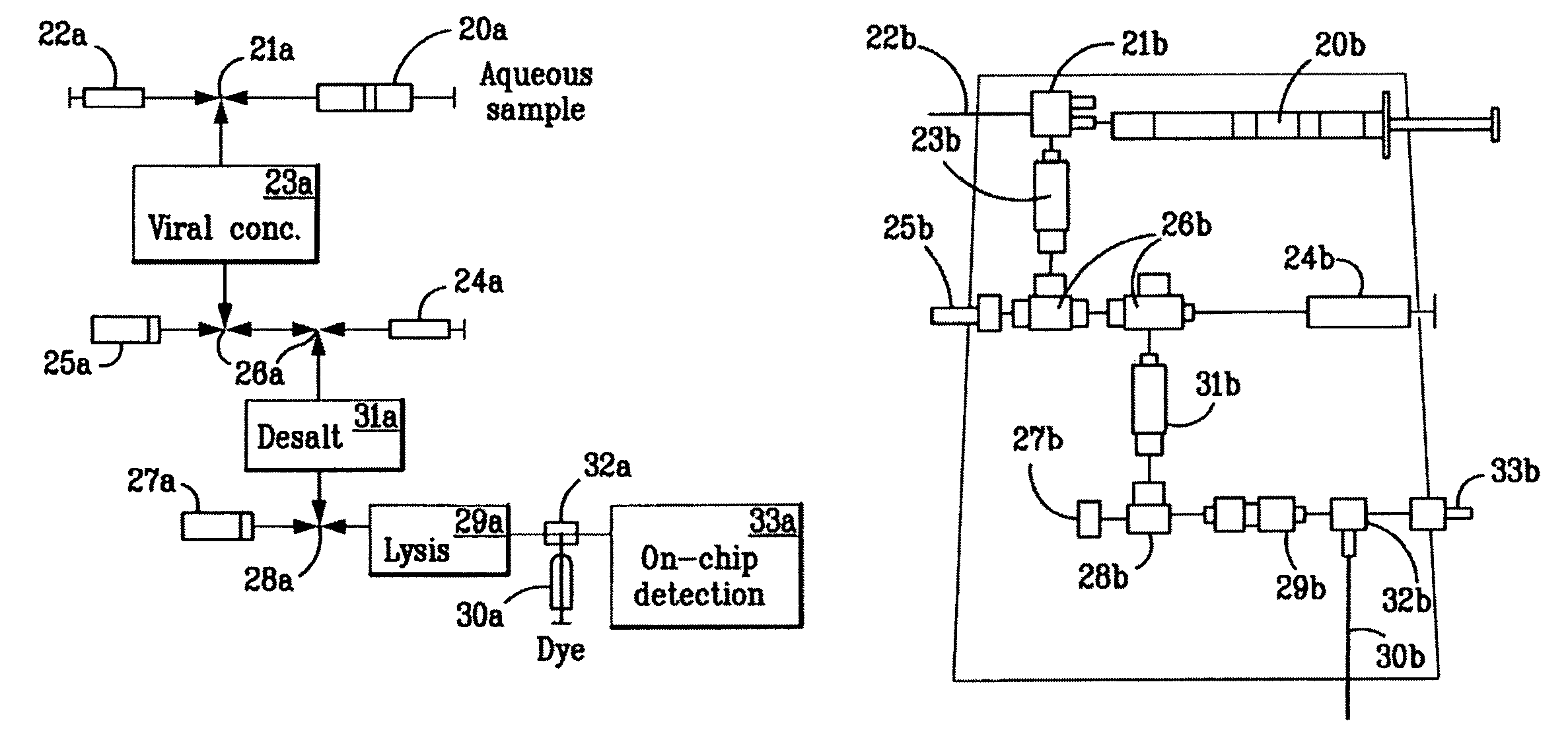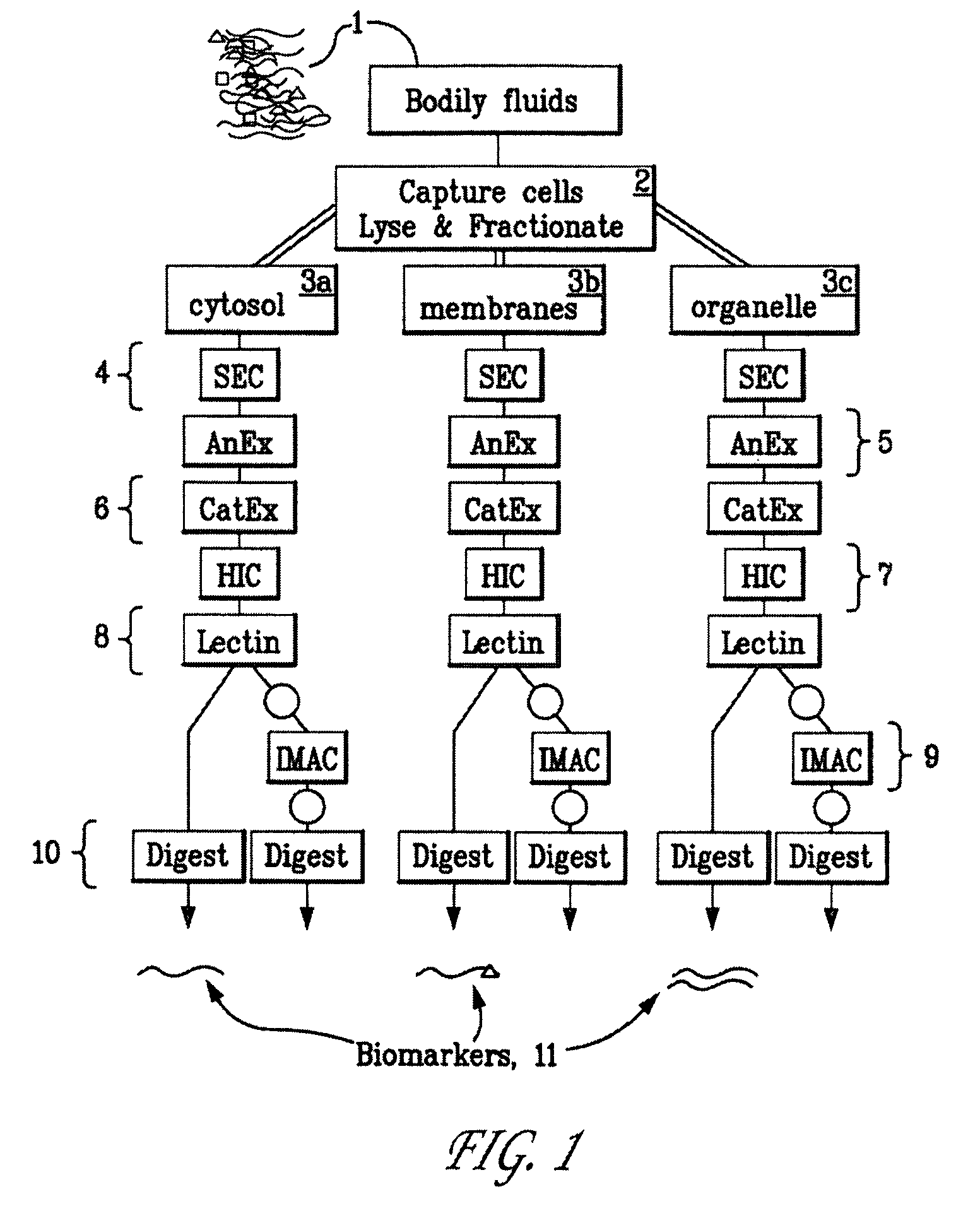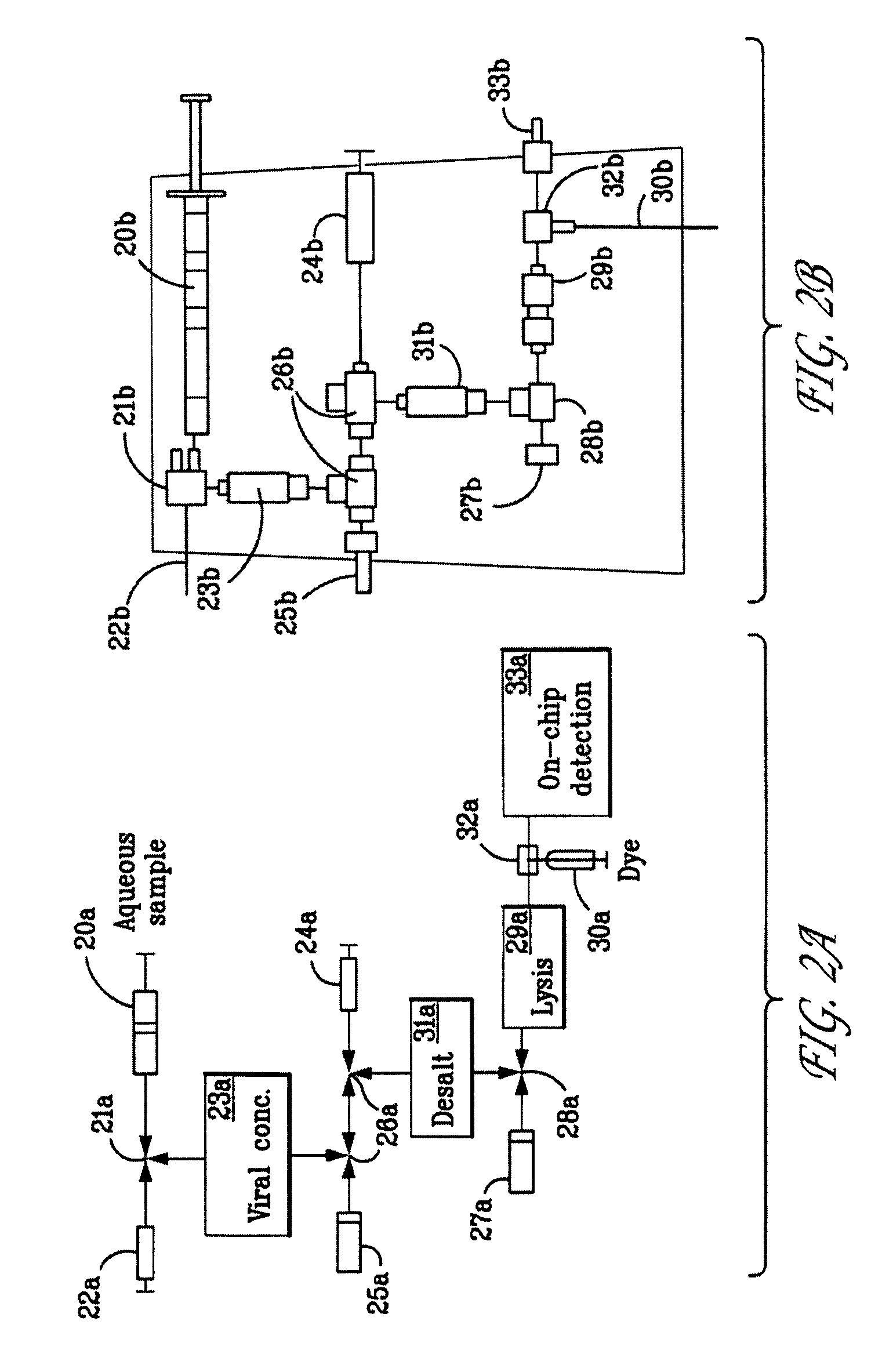Multidimensional bioseparation with modular microfluidics
a microfluidic and bioseparation technology, applied in the field of chemical separation, can solve the problems of inability to achieve comprehensive analysis and obtain reliable information concerning the components of the mixture, the complexity of the sample can easily overwhelm the capability of the instrument, and the instrument is not typically able to distinguish, separate or resolve all the components, etc., to achieve rapid development of effective separation protocols, improved procedures, devices and systems
- Summary
- Abstract
- Description
- Claims
- Application Information
AI Technical Summary
Benefits of technology
Problems solved by technology
Method used
Image
Examples
Embodiment Construction
[0040]After considering the following description, those skilled in the art will clearly realize that the teachings of the invention can be readily utilized in the separation and / or processing of complex chemical mixtures, particularly complex mixtures of biological materials, including the effective assembly, testing and evaluation of candidate microfluidic separation systems, devices and / or procedures prior to detection. Typical detection methods include mass spectrometric, UV, fluorescence, electrochemical, among other detection methods known in the art.
[0041]The contents of all references cited herein are incorporated herein by reference for all purposes.
[0042]The present invention relates generally to the separation of complex chemical mixtures which can arise in numerous fields of application. To be concrete in our discussion, we focus our descriptions and examples on the field of bioseparation and bioanalysis, especially processes related to the location and identification of...
PUM
 Login to View More
Login to View More Abstract
Description
Claims
Application Information
 Login to View More
Login to View More - R&D
- Intellectual Property
- Life Sciences
- Materials
- Tech Scout
- Unparalleled Data Quality
- Higher Quality Content
- 60% Fewer Hallucinations
Browse by: Latest US Patents, China's latest patents, Technical Efficacy Thesaurus, Application Domain, Technology Topic, Popular Technical Reports.
© 2025 PatSnap. All rights reserved.Legal|Privacy policy|Modern Slavery Act Transparency Statement|Sitemap|About US| Contact US: help@patsnap.com



